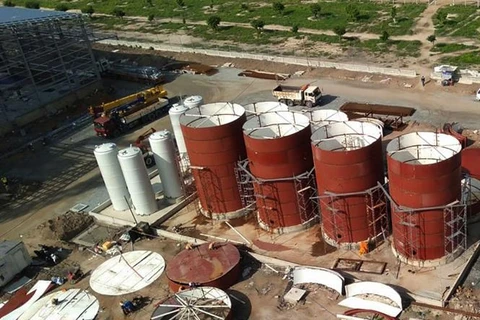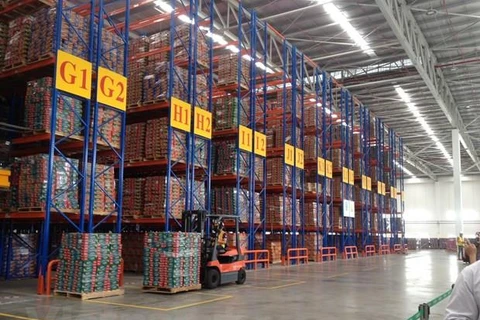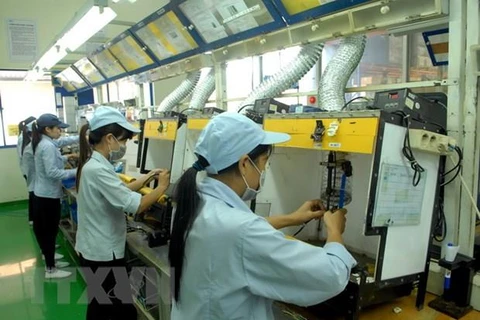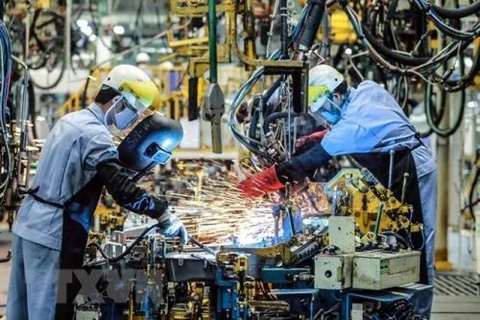Hanoi (VNS/VNA) - Vietnam is expected to attract more investors as its economy is developing at a stable rate, with GDP growth of 7 percent.
The country’s competitiveness has increased by 10 places in the 2019 Global Competitiveness Index, which was announced this week.
The information was released by VinaCapital Co-Founder and CEO Don Lam at the two-day 2019 VinaCapital Investor Conference held in Hanoi earlier this week.
He said after four consecutive years of holding its investor conference in Ho Chi Minh City, this year Vinacapital chose Hanoi because the capital city was becoming a leading destination for foreign direct investment in Vietnam.
“Most investors come from the Republic of Korea and Japan, showing that the wave of Asian capital flow is interested in the Vietnamese market,” Lam said.
VinaCapital, a leading investment management firm, plans to launch the VinaCapital100 ETF (exchange-traded fund) by the end of this year, with initial capital of 50 billion VND (2.1 million USD).
“I hope after the meeting today, investors will pour more capital into the Vietnamese stock market,” Lam said.
At the two-day conference, which attracted experts, speakers and representatives from investment partners, the participants discussed various topics including environmental, social and governance (ESG) criteria in investment in Vietnam, opportunities in technology development, sustainable energy production and tourism.
In addition, directors of companies and leaders in the banking, logistics, steel and retail sectors shared experience and offered solutions to access opportunities from the strong growth of Vietnam’s economy.
According to Andy Ho, Managing Director and Chief Investment Officer at VinaCapital, the firm is managing over 3.3 billion USD in assets, of which 1.7 billion USD comes from investors (including 917 million USD from the Vietnam Opportunity Fund and open funds), while the rest comes from the company’s own trading.
One of VinaCapital’s largest projects is the 4-billion-USD Hoi An Casino project, of which VinaCapital holds 31.91 percent and SunCity – which is 70 percent owned by Hong Kong-based Chow Tai Fook – holds 68.09 percent.
This project started construction in April 2016 and was expected to open in December this year, Ho said.
He said VinaCapital had also invested in a number of other real estate projects in Vietnam such as a resort in Quy Nhon City in the central coastal province of Binh Dinh and the 100-million-USD VinaCapital Ventures. He did not disclose the company’s own trading items.
According to Nguyen Thi Thai Thuan, General Director of VinaCapital Fund Management JSC, VinaCapital is managing open funds for Vietnamese investors including Bảo Thịnh VinaWealth Enhanced Fixed Income Fund (VFF), with a net asset value (NAV) of 161 billion VND, Hung Thinh VinaWealth Opportunity Fund (VEOF), with NAV of 524 billion VND), VinaCapital Opportunity Fund (VOF) with 82 billion VND, and some other funds. The net worth of these funds is about 55 million VND.
VinaCapital statistics show that as of August 31 this year, VFF gained a growth rate of 5.7 percent compared with that of early this year, and VEOF increased by 10 percent, meanwhile VOF decreased by 2.8 percent./.
The country’s competitiveness has increased by 10 places in the 2019 Global Competitiveness Index, which was announced this week.
The information was released by VinaCapital Co-Founder and CEO Don Lam at the two-day 2019 VinaCapital Investor Conference held in Hanoi earlier this week.
He said after four consecutive years of holding its investor conference in Ho Chi Minh City, this year Vinacapital chose Hanoi because the capital city was becoming a leading destination for foreign direct investment in Vietnam.
“Most investors come from the Republic of Korea and Japan, showing that the wave of Asian capital flow is interested in the Vietnamese market,” Lam said.
VinaCapital, a leading investment management firm, plans to launch the VinaCapital100 ETF (exchange-traded fund) by the end of this year, with initial capital of 50 billion VND (2.1 million USD).
“I hope after the meeting today, investors will pour more capital into the Vietnamese stock market,” Lam said.
At the two-day conference, which attracted experts, speakers and representatives from investment partners, the participants discussed various topics including environmental, social and governance (ESG) criteria in investment in Vietnam, opportunities in technology development, sustainable energy production and tourism.
In addition, directors of companies and leaders in the banking, logistics, steel and retail sectors shared experience and offered solutions to access opportunities from the strong growth of Vietnam’s economy.
According to Andy Ho, Managing Director and Chief Investment Officer at VinaCapital, the firm is managing over 3.3 billion USD in assets, of which 1.7 billion USD comes from investors (including 917 million USD from the Vietnam Opportunity Fund and open funds), while the rest comes from the company’s own trading.
One of VinaCapital’s largest projects is the 4-billion-USD Hoi An Casino project, of which VinaCapital holds 31.91 percent and SunCity – which is 70 percent owned by Hong Kong-based Chow Tai Fook – holds 68.09 percent.
This project started construction in April 2016 and was expected to open in December this year, Ho said.
He said VinaCapital had also invested in a number of other real estate projects in Vietnam such as a resort in Quy Nhon City in the central coastal province of Binh Dinh and the 100-million-USD VinaCapital Ventures. He did not disclose the company’s own trading items.
According to Nguyen Thi Thai Thuan, General Director of VinaCapital Fund Management JSC, VinaCapital is managing open funds for Vietnamese investors including Bảo Thịnh VinaWealth Enhanced Fixed Income Fund (VFF), with a net asset value (NAV) of 161 billion VND, Hung Thinh VinaWealth Opportunity Fund (VEOF), with NAV of 524 billion VND), VinaCapital Opportunity Fund (VOF) with 82 billion VND, and some other funds. The net worth of these funds is about 55 million VND.
VinaCapital statistics show that as of August 31 this year, VFF gained a growth rate of 5.7 percent compared with that of early this year, and VEOF increased by 10 percent, meanwhile VOF decreased by 2.8 percent./.
VNA
























